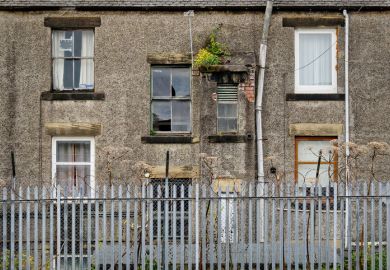Rising expectations from students paying higher tuition fees have prompted UK universities to spend more than £2 billion on improving their estates in the space of a year, according to a new report.
The figure for 2012-13, detailed in the annual statistical paper from the Association of University Directors of Estates (AUDE), is up £170 million, or 9 per cent, on the previous year. Investment was directed at new social learning spaces as well as more traditional teaching and research premises, the report says.
“Part of this is likely to be driven by the need to provide an outstanding environment to ensure continued recruitment of students,” the report explains. “Again it is no doubt linked to student expectations as tuition fees have risen.”
The outlay of more than £2 billion on construction of new non-residential buildings suggests a substantial drop in spending witnessed in 2011-12 may not be the beginning of a longer term decline in investment. The AUDE report puts the annual turnover of the university estates sector at £.3 billion in 2012-13, a total which would only be outstripped by the three biggest companies on the FTSE index.
On top of the £2 billion in spending, British universities invested nearly £400 million of capital funding on residential accommodation during 2012-13, an increase on previous years. The report says residential standards are a key issue, “particularly for parents and carers to ensure that a student is provided with a safe and appropriate environment”.
George Griffith, an associate director at property advisory company CBRE who was involved in authoring the report, said good quality buildings were a key way for universities to differentiate themselves.
“I think institutions understand better than people realise that they are in a competitive market environment and that what is called rather tritely the ‘student experience’ is very important,” he said.
This competition between universities is only likely to increase when the cap on student recruitment is lifted next year, Mr Griffith added.
The consequence of major investment is that four out of five non-residential university properties are now new or in “as good as new” condition, compared with 63 per cent in 2001-02, the report says. Among residential premises, 77 per cent were classed as new or as good as new.
The report says universities are increasingly relying on their own surpluses or borrowing to fund their capital programmes, with grants from academic funding bodies having substantially reduced in recent years.
However, AUDE cautioned that expected increases in the costs of servicing debts and changing rules on borrowing might mean that levels of capital expenditure level out or reduce slightly in future years.
Sue Holmes, the chairman-elect of AUDE and the director of estates for Oxford Brookes University, said institutions were catching up on a backlog of much-needed improvements.
“Students are much more vocal and vociferous about whether they think something should be challenged or not,” she added. “Ten or 15 years ago there was more acceptance that ‘I’ve come here, and I don’t know any different’.”
For the first time, the report’s calculation of universities’ average income per bed they own included revenue from conferencing and catering. This pushed the figure past £6,000 per bed, but Mr Griffith cautioned that this included bar and hospitality income that was not necessarily linked to accommodation.
Register to continue
Why register?
- Registration is free and only takes a moment
- Once registered, you can read 3 articles a month
- Sign up for our newsletter
Subscribe
Or subscribe for unlimited access to:
- Unlimited access to news, views, insights & reviews
- Digital editions
- Digital access to THE’s university and college rankings analysis
Already registered or a current subscriber?




